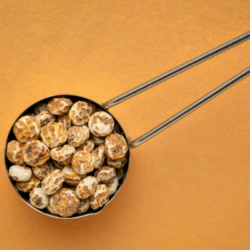Anal fissures are a common but often taboo health problem. They can lead to intense pain and rectal bleeding, considerably affecting quality of life. If you’re wondering what to do about anal fissures, you’ve come to the right place. In this article, we’ll explore in detail the causes, symptoms, diagnosis and treatment options for anal fissures. Whether you’re dealing with a recent acute fissure or a persistent chronic fissure, we’ll provide you with the essential information you need to take charge of your anal health. Let’s start by understanding how a healthcare professional diagnoses an anal fissure and what you need to consider for effective treatment.
How do I know if I have an anal fissure?
When you consult a healthcare professional about an anal fissure, the diagnostic process begins with a thorough interview. The professional will gather information about your symptoms, their duration and severity. It will be essential to describe any pain, bleeding or discomfort in the anal region.
Next, a full physical examination will be carried out. This will include a thorough inspection of the anal region. The doctor will use appropriate medical instruments to examine the affected area, looking for obvious signs of anal fissure. Often, the fissure is visible during this initial physical examination.
It is also essential to differentiate between acute and chronic fissures, as this may influence the choice of treatment. An acute fissure will generally appear as a fresh tear, somewhat resembling a paper cut. In contrast, a chronic fissure is likely to have a deeper tear and may be associated with internal or external tissue growth.
How do you recognise an anal fissure?
Common symptoms include sharp pain, a burning sensation and bleeding during bowel movements. Some people may also experience anal muscle spasms and notice a small skin bump near the fissure.
It issometimes difficult to distinguish the symptoms of an anal fissure from those of haemorrhoids, as they may overlap. However, the pain is often more frequent and intense in the case of an anal fissure, whereas haemorrhoidal pain can be more constant.
The role of anal trauma and pre-existing conditions, such as chronic constipation or diarrhoea, plays a major role in the development of anal fissures. Understanding these factors is essential to better prevent and treat these painful conditions effectively.
Location of the fissure:
The location of the anal fissure can provide valuable clues to its underlying cause. For example, a fissure that is on the side of the anal opening, rather than towards the back or front, may be a sign that it is linked to another medical condition. Crohn’s disease, a chronic inflammatory bowel disease, is one such condition. In such cases, the doctor may recommend additional diagnostic tests to identify any underlying condition. These tests may include anoscopy, flexible sigmoidoscopy and colonoscopy, which allow the condition of the rectum and colon to be explored in greater depth.
What can cause anal fissures?
Anal fissures are often the result of anal trauma, which can occur as a result of excessive strain during defecation. The excessive strain exerted during bowel movements can cause a tear in the delicate anal mucosa, resulting in a fissure.
Certain pre-existing conditions can also contribute to the development of anal fissures. For example, chronic constipation can make stools harder and more difficult to pass, increasing the risk of anal trauma.
The anatomy of the anal region also plays a key role. The presence of anal sphincters, circular muscles that surround the anus to control bowel movements, can influence susceptibility to fissures. If these muscles are too tight, they can exert excessive tension on the anal mucosa, making it easier for fissures to form.
How should anal fissures be treated?
Treatment of anal fissures often depends on their severity and duration. In many cases, anal fissures can heal spontaneously or with home treatments. To promote healing, it is essential to maintain soft stools. This can be achieved by increasing dietary fibre intake, using over-the-counter stool softeners and drinking sufficient fluids. Sitz baths in lukewarm water for 10 to 20 minutes several times a day can also help relax the anal sphincter and promote healing.
However, if symptoms persist despite these measures, it is advisable to consult a healthcare professional.
How can I relieve an anal fissure at home?
Here are some simple steps you can take at home to relieve anal fissures and promote healing.
- Increase your daily fibre intake by including plenty of fibre-rich foods in your diet, such as fruit, vegetables and wholegrain cereals.
- Avoid dehydration by drinking plenty of water.
- Try to exercise more, for example by taking a walk or going for a run every day.
- Find a time of day when you can comfortably spend time in the toilet.
- Don’t delay going to the toilet when you feel the need.
- If you use wet wipes, avoid products that are scented or contain alcohol, as this may cause discomfort or itching. If you use toilet paper, choose a soft brand and avoid rubbing too hard.
- Soak your anal area in a warm bath several times a day, especially after having a bowel movement, to relax the muscles in the anus
What medicines are prescribed for anal fissures?
The management of anal fissures often requires the use of specific medicines, which your GP may prescribe to relieve your symptoms and speed up healing. Here is a list of the main drugs used in this context:
- Laxatives: These medicines make the defecation process easier by softening the stool. Adults with anal fissures are usually prescribed fibre-based laxatives in tablet or granule form. They work by moisturising the stools, making them more supple and less likely to cause dryness.
- Painkillers: In the event of prolonged pain after defecation, your doctor may recommend common painkillers such as paracetamol or ibuprofen, available from chemists or supermarkets. It is essential to strictly follow the dosage instructions given in the patient leaflet or on the packaging of these medicines.
- Glyceryl nitrate (GTN ): If your symptoms persist after one or two weeks, GTN, an ointment applied locally to the anal canal twice a day, may be prescribed. This substance dilates the blood vessels around the anus, promoting better blood flow to the fissure and speeding up healing. GTN also helps to reduce pressure in the anal canal, which reduces pain. Treatment with GTN generally lasts at least six weeks, or until complete healing.
- Topical anaesthetics: In cases of severe pain, a topical anaesthetic may be prescribed to numb the anal area before defecation. Lidocaine is the most commonly recommended anaesthetic, usually in gel or ointment form, for short-term use over just a few days.
- Calcium channel blockers: Although mainly used to treat high blood pressure, calcium channel blockers have also been shown to be effective in the treatment of anal fissures. Applied locally, they relax the sphincter muscle and promote better blood flow to the fissure. Side effects, such as headaches, dizziness and itching, are generally temporary and disappear after a few days.
- Botulinum toxin injections: This relatively new treatment is considered when other medications have proved ineffective. Botulinum toxin injections paralyse the sphincter muscle, preventing muscle spasm and reducing pain. Their effectiveness is similar to that of GTN and topical calcium channel blockers. The effects of botulinum toxin last approximately 2 to 3 months, enough time for the fissure to heal.
By carefully following your doctor’s recommendations and taking the prescribed medication in the appropriate dosage, you can help relieve your symptoms and promote healing of your anal fissure. Don’t forget to see your healthcare professional regularly to assess the progress of your treatment.
Non-surgical treatments:
For anal fissures that require more extensive treatment, several non-surgical options may be considered. One option is the use of external nitroglycerine, which stimulates blood flow to the fissure, promoting healing and relaxation of the anal sphincter. Topical anaesthetic creams such as lidocaine may be prescribed to relieve pain.
Another option is to inject Botox into the anal sphincter muscle, which can help relax muscle spasms. In addition, blood pressure lowering drugs such as nifedipine or diltiazem can be used to relax the anal sphincter.
It is essential to understand the benefits and potential side effects of these treatments before making a decision, as each option has specific considerations.
Surgery:
When other treatments prove ineffective for a chronic resistant anal fissure, surgery may become necessary. One commonly used option is lateral internal sphincterotomy (LIS). This procedure involves making a small incision in the anal sphincter muscle, which helps to reduce muscle tension and promote healing of the fissure. However, it is important to note that surgery carries a risk, albeit small, of causing incontinence.
Studies have shown that surgery is far more effective than any medical treatment for chronic anal fissures. However, it is essential to weigh up the benefits and risks before deciding on surgery.
What are the possible complications of anal fissures?
Chronic anal fissures, when they do not heal spontaneously, can lead to additional complications. These persistent fissures create a vicious circle of pain and muscle spasms, which can further tighten the fissure and reduce blood flow to the tissues, making healing more difficult.
Potential complications of chronic anal fissures include:
- Faecal impaction, where hard stool gets stuck in the rectum.
- Anal stenosis, which is the narrowing of the anal canal, making it more difficult for faeces to pass.
- Anal fistula, an abnormal connection between the anus and the adjacent skin, sometimes resulting in a discharge of pus.
It is vital to monitor symptoms carefully and consult a healthcare professional if you suspect complications from a chronic anal fissure.
How can a fissure be prevented?
Prevention is very important to maintain anal health and avoid the discomfort they can cause. Here are a few key points to consider:
- The importance of consulting a healthcare professional in the event of persistent anal symptoms: If you experience symptoms such as pain, bleeding, or persistent anal discomfort, it is imperative to consult a healthcare professional. Anal fissures can be embarrassing and painful, but they can also be a sign of other underlying medical conditions, including inflammatory bowel disease, infection or more serious problems. Early diagnosis is essential for effective treatment.
- Managing chronic conditions that affect the anus: If you have chronic medical conditions that increase the risk of anal fissures, such as chronic constipation, diarrhoea or inflammatory bowel disease, it is essential to manage them properly. This may include dietary changes, medication prescribed by a healthcare professional, or other specific interventions.
- Preventing complications and recurrences of anal fissures: Once an anal fissure has been diagnosed and treated, it is essential to take steps to prevent recurrences and complications. This can include maintaining good dietary habits, such as a high-fibre diet and adequate hydration to keep stools soft. Sitz baths in lukewarm water after bowel movements can also help prevent the fissure from worsening. If an anal fissure persists or recurs despite preventive measures, consult a healthcare professional to consider additional treatment options.
Source:
- https://www.ncbi.nlm.nih.gov/pmc/articles/PMC6650108/
- https://www.ncbi.nlm.nih.gov/books/NBK526063/
- https://www.mayoclinic.org/diseases-conditions/anal-fissure/diagnosis-treatment/drc-20351430
- https://www.nhs.uk/conditions/anal-fissure/treatment/







